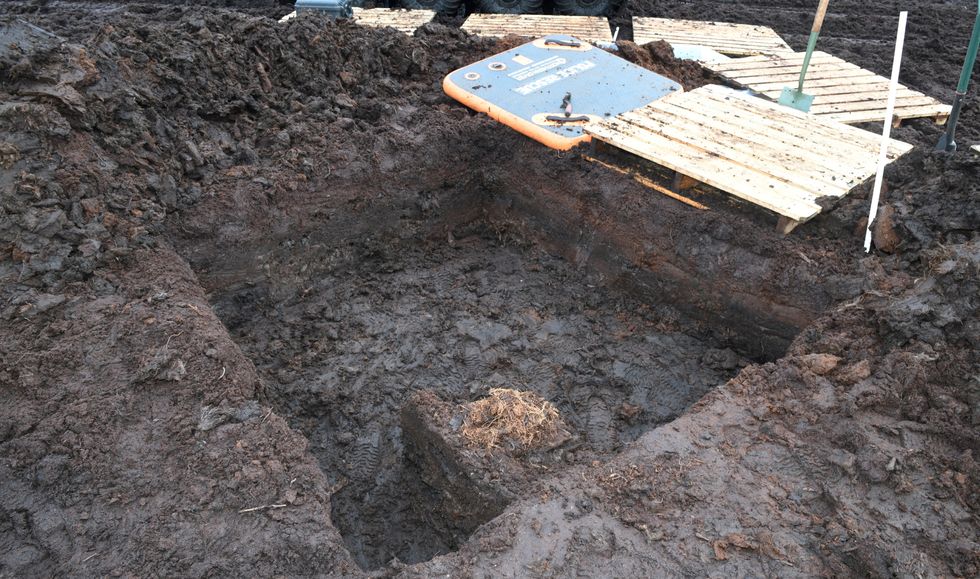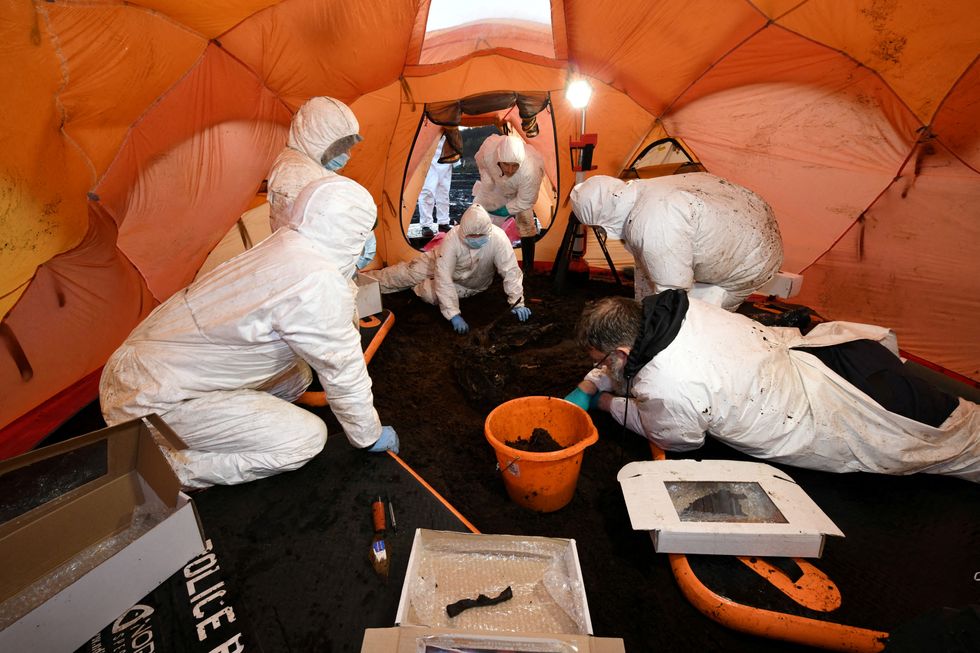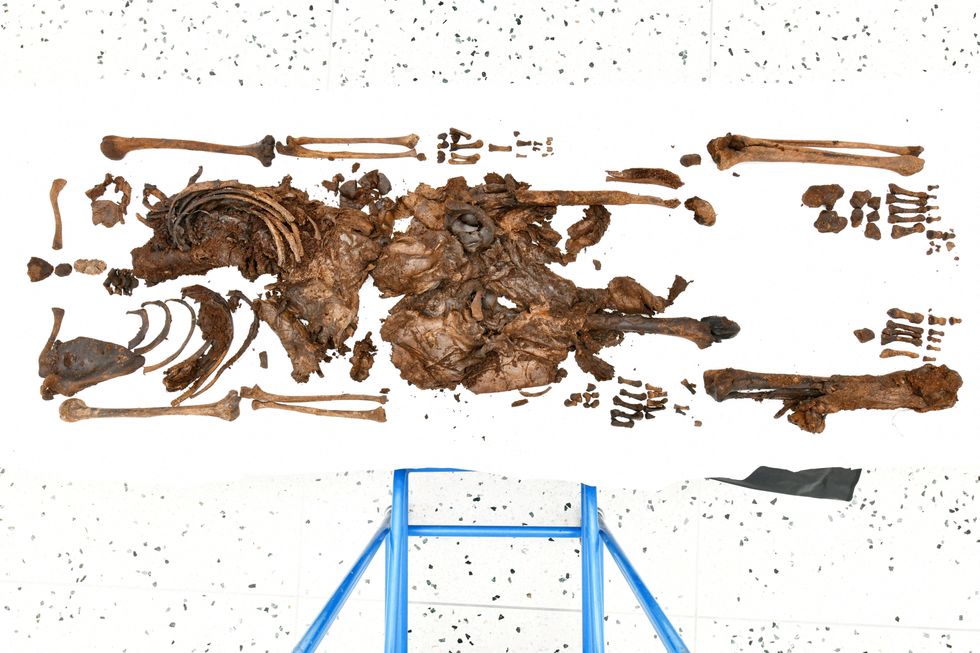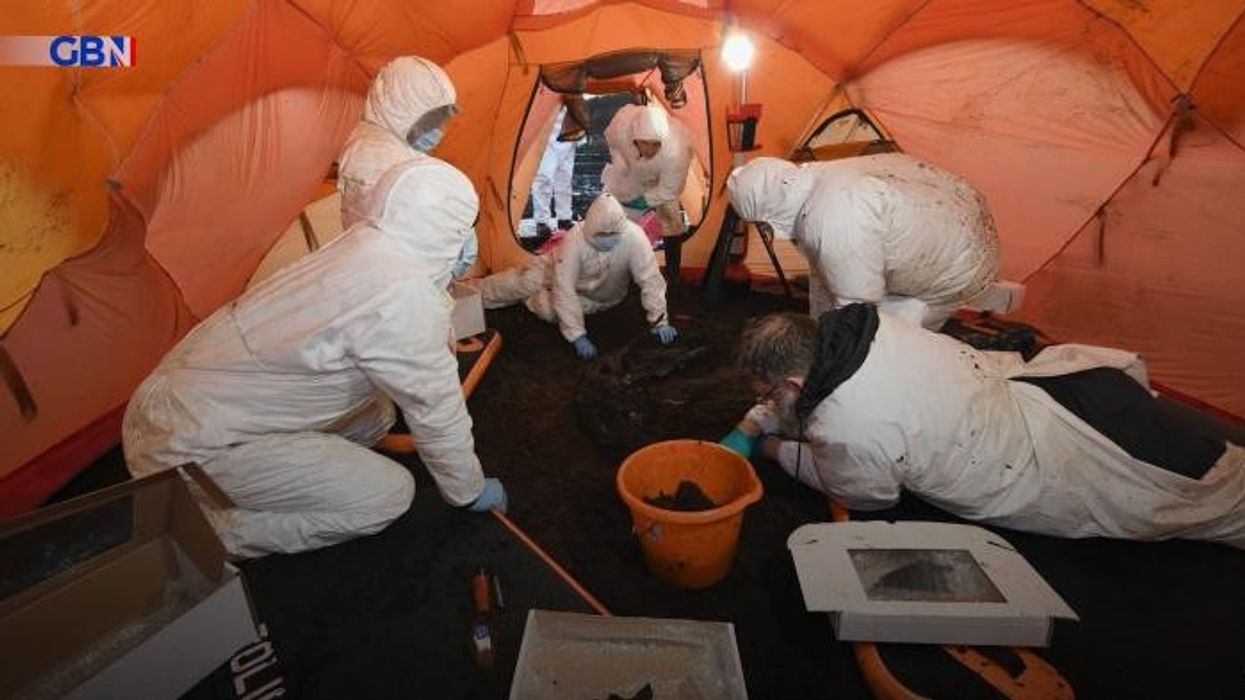Archaeologists find incredible human remains dating back 2,500 years in middle of boggy water

Scientists have hailed it as an 'extraordinary find on a global scale'
Don't Miss
Most Read
Ancient human remains that are potentially thousands of years old have been discovered in a bog in Northern Ireland.
The remains found on the surface of peatland in Bellaghy, Co Londonderry, in October 2023.
Carbon dating has put the bodies as being 2,000 to 2,500 years old. The skeletal remains are believed to be from a male aged between 13 to 17 years of age at the time of death.
The body was found in a peat bog, a wetland environment which can aid preservation of organic matter, in the village of Bellaghy after police archaeologists were alerted in October to the presence of human bones on the surface.

The archaeological site at a peat bog in Bellaghy, Northern Ireland
|Reuters
Detective Inspector Nikki Deehan said: "This is the first time radiocarbon dating has been used on a bog body in Northern Ireland, and the only one to still exist, making this a truly unique archaeological discovery for Northern Ireland."
The excavations uncovered a tibia and fibula and a humerus, ulna and radius bone, belonging to the left leg and right arm possibly of a male aged between 13-17 at the time of death, police said, adding little is known so far about how the individual died.
The skeleton also had the presence of partial skin, fingernails, toenails and possibly a kidney.
Chief executive of Northern Ireland's Forest Service John Joe O'Boyle called it a "very exciting find."
LATEST DEVELOPMENTS

Staff working on the dig in Northern Ireland
|Reuters
He added: "It certainly adds an important chapter to the historical and cultural significance of this hinterland and archaeological discoveries of bog bodies across Europe."
The radiocarbon dating was conducted at the 14Chrono Centre, which is part of Queen's University Belfast.
Geophysicist at Queen's University Dr Alastair Ruffell told the BBC: "The remains were discovered at approximately one metre below the current land surface which matches the radiocarbon estimates.
"In addition, they were amongst a cluster of fossil tree remains suggesting that the body may have died or been buried in a copse or stand of trees, or washed in...This is not only significant because it's Iron Age, but also because of the landscape situation.

The remains that were found in the bog near the village of Bellaghy
|Reuters
"We are in a series of boglands north of Lough Neagh which are very interesting from where they occur because of how the glaciers moved through here and how humans then arrived."
Other so-called "bog bodies", the naturally preserved remains of long-deceased humans found in peat bogs have been recovered and studied over the years, most commonly from Northern Europe.
The remains of this body will be taken for further studies and analysis.











